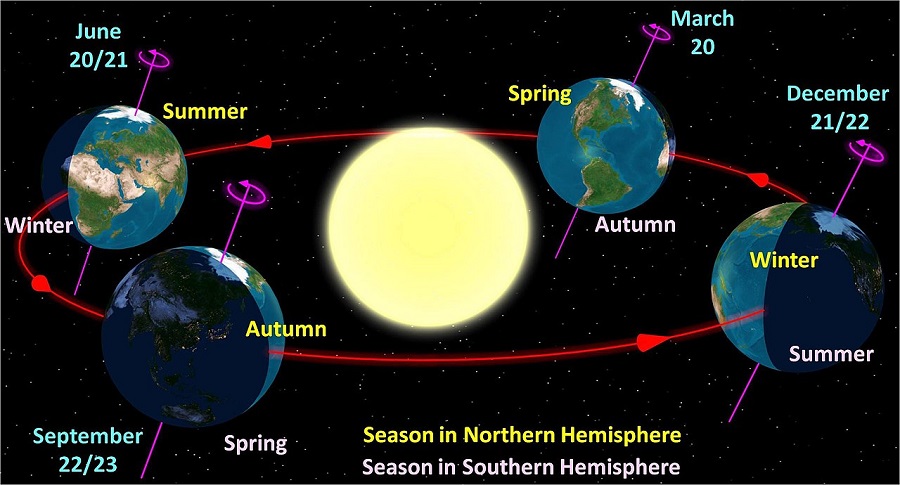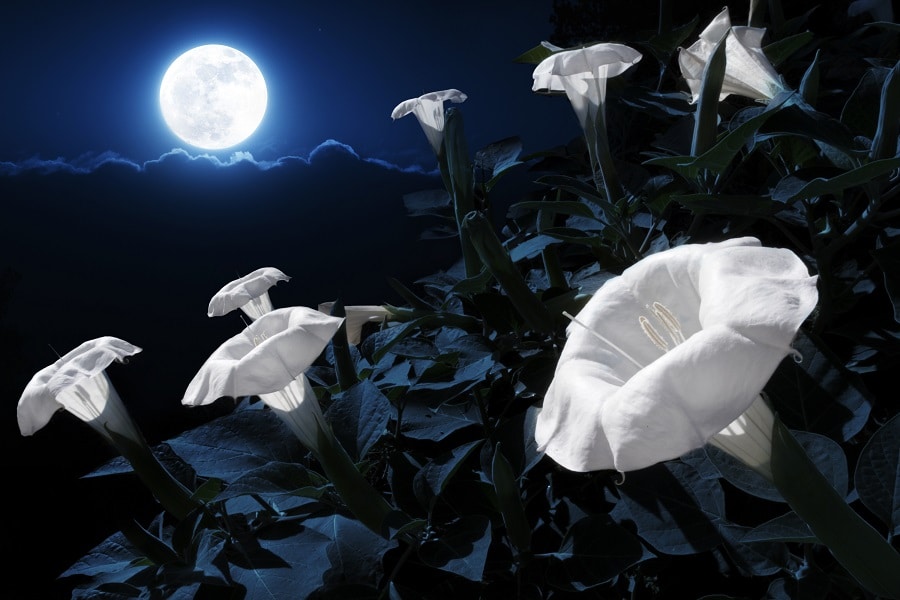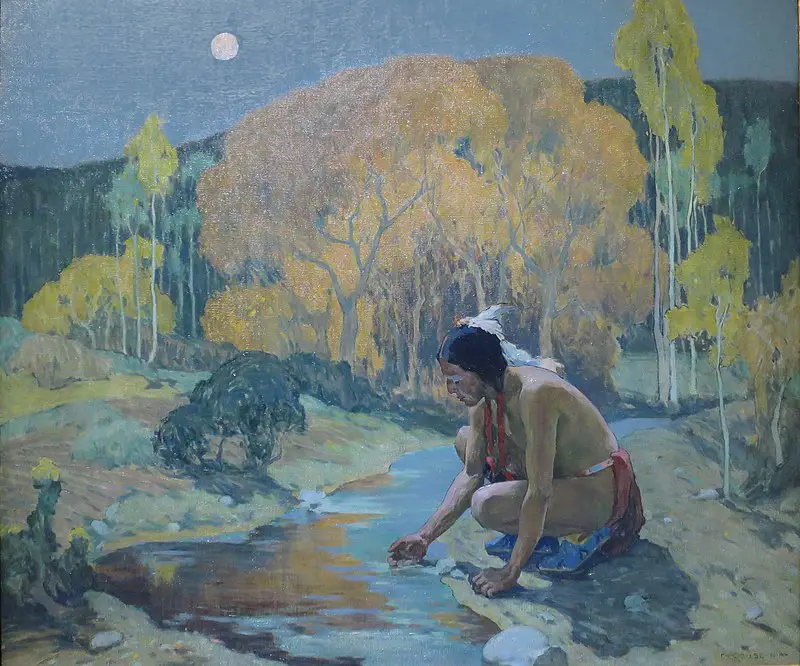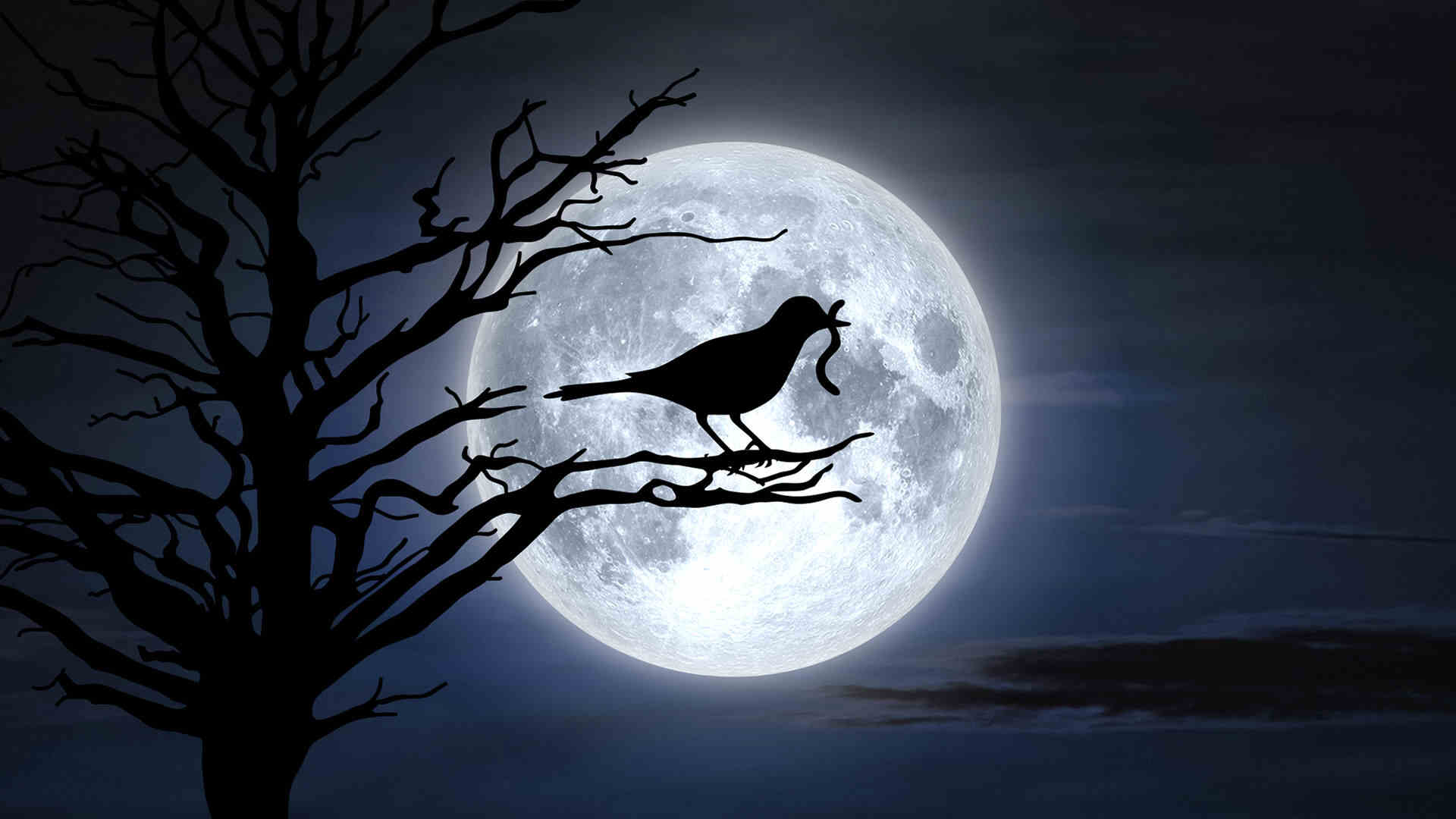Whether a full moon in March is a Worm Moon or a Harvest Moon is not rocket science to solve. It’s just simple physics. The third full moon of 2023 in the earth’s northern hemisphere is known as Worm Moon. This March full moon will occur on Tuesday, March 7 at 7:40 Eastern Standard Time (EST).
On the contrary, for the people living in the southern hemisphere: let’s say Australian people, call the full moon in March a Harvest Moon. In the earth’s southern areas, the harvest moon will occur on Tuesday, March 7 at 23:40 Australian Eastern Daylight Time (AEDT).
Wanna know why different full moon names in the different hemispheres and many more interesting facts about the full moon in March 2023? I would recommend you to keep reading! Let’s dive right in!!!
Why Different Full Moon Names in Different Hemispheres?
Just because there is approx 6 months of seasonal difference between the northern and southern hemispheres, people living above and below the equator use different full moon names.

Obviously, now you would be thinking that what could be the reason behind the seasonal difference between the two hemispheres?
Well, just because the earth has an axial tilt of 23.4 degrees, there is a seasonal mismatch between the southern and the northern hemisphere. See the above image for a proper understanding.
However, If you wanna know more about the earth’s tilt and how it affects the seasons on the earth, you can check this article. I can bet you will love this piece of article.
Different Full Moon Names in Northern Hemisphere
For millennia, ancient humans have used different seasons as a guide to track the different full moons. Or, you can say for millennia, humans have used the full moons to track the changing season. However, seasons are not the only possible way to define different full moon names.
What I mean is that the names given to various full moons are based on a couple of different sources. Out of all, the most famous and widely acknowledged full moon names come from the tribes of Native American culture.
As per the legends, to keep track of changing seasons, the Algonquin tribal people used to follow the lunar calendar rather than following the solar calendar. These full moon names were later adopted by Colonial Americans and European settlers. And, with time, these names were finally integrated with the modern (Georgian calendar) calendar
Editor’s Choice: Full Moon Calendar 2023 (Dates & Names – Northern Hemisphere)
Full Moon in March 2023 – Worm Moon in Northern Hemisphere

In the northern hemisphere, the full moon in March is known as Worm Moon. WHY? Because this full moon marks the end of the winter season. Or, one could simply say that the cold weather starts to clear slightly.
Additionally, according to The Old Farmer’s Almanac, March’s full Moon goes by the name Worm Moon, which was originally thought to refer to the earthworms that appear as the soil warms in spring. This invites robins and other birds to feed—a true sign of spring!
Speaking of Spring, this full moon will also be the last full moon before the arrival of the Spring Equinox in the earth’s northern hemisphere. The Spring Equinox i.e the first day of spring will occur on Monday, March 20 at 21:25 Universal Coordinated Time (UTC).
Other Cultural Full Moon Names for March in Northern Hemisphere
Well, if you go somewhere away from your native place, you will see that local indigenous people have their own indigenous full moon names. For example:
- In Indian Culture, the full moon in March is known as Phalguna Purnima. The full moon in Hindi is known as Purnima.
- English Medival people call it a Chaste moon.
- Chinese people call the full moon in March a Sleepy Moon.
- Dakotah people call it the Moon When Eyes Are Sore From Bright Snow.
- Cherokee tribe people call it the Windy Moon.
- Colonial American People call it the Fish Moon.
- Choctaw tribe people call it the Big Famine Moon, etc.
Different Full Moon Names in Southern Hemisphere
You would be baffled to know that the full moon names used in the southern hemisphere are the same as the northern hemisphere, just the seasonal difference. Wanna know why???
Well, because most of the people living in the southern hemisphere (let’s say Australia or New Zealand) are none other than European settlers.
In other words, one can say that European settlers, at first, integrated the native American full moon names into their modern Georgian calendar. And, later, many of these full moon names went with them to new places around the world.
Editor’s Choice: Full Moon Calendar 2023 (Dates & Names – Southern Hemisphere)
Full Moon in March 2023 – Harvest Moon in Southern Hemisphere

In the southern hemisphere, the full moon in March is known as the Full Harvest Moon or Harvest Moon. WHY? Because this is the time of the year when harvesting takes place in the southern hemisphere.
Moreover, this will also be the last full moon before the arrival of the March Equinox. March Equinox i.e the first day of fall in the southern hemisphere will occur on Tuesday, March 21 at 08:25 Australian Eastern Daylight Time (AEDT).
Other Cultural Full Moon Names for March in Southern Hemisphere
Well, if you go somewhere away from your native place, you will see that local indigenous people have their own indigenous full moon names. Sadly, that is not the case with the people living in the southern hemisphere.
Not to mention, for several days, I have been trying to get some detail regarding the full moon naming criteria for the Earth’s southern areas. But, I did not find any single piece of work related to that.
However, I did find one resource where it has been mentioned that the native people of the southern hemisphere (Māori People of New Zealand) didn’t assign a name to only the Full Moon phase of each month. Every night of the Moon had a name.
Therefore, as a result of these elaborated naming conditions, many in the Southern Hemisphere rely on European-inspired Full Moon Names.
Latest Update
Just to let you know, one of my friends Retha Potgieter recently told me about the update on Full moon names in South Africa. Since September 2020, South Africa have their own unique full moon names. As per the Centre for Astronomical Heritage (CfAH), in South Africa, the full moon in March is known as HARVEST MOON.
And, if there is a second full moon in March, it is known as OCHRE MOON. The Centre for Astronomical Heritage (CfAH) is a non-profit company working to protect South Africa’s astronomical heritage.
The Centre’s mission is to record, preserve, and disseminate information about South Africa’s tangible and intangible astronomical heritage. I would request you to visit this website at least once. They are doing nice work.
When is the Next Full Moon in 2023?
The next full moon will occur on Tuesday, March 7 at 7:40 Eastern Standard Time (EST). It will be known as the Worm Moon. Okay, for northerners, it will be a Worm Moon. But, for the southerner, it will be a Harvest Moon.
Therefore, for southerners, it will occur on Tuesday, March 07 at 23:40 Australian Eastern Daylight Time (AEDT). In addition, on this day, the moon will be in Virgo. At last, I wish you good luck with this epic moon gazing.
That’s it for this post. If you like this article, share it if you like, like it if you share it. You can also find us on Mix, Twitter, Pinterest, and Facebook. Hey man, If you have come this far, do give us feedback in the comment section. It would make my day. You can also make a donation. Your donations will help us to run our website and serve you BETTER. Cheers!!!
You might also like:
- The Ugliest Secret of Blue Moon is Out: It’s a HOAX
- Full Moon in January 2023 – Wolf Moon or Buck Moon?
- February Full Moon 2023 – Snow Moon or Sturgeon Moon?
- April Full Moon 2023 – Pink Moon or Hunter’s Moon?
- Full Moon in May 2023 – Flower Moon or Beaver Moon?
- June 2023 Full Moon Name: Strawberry Moon or Cold Moon?
- Full Moon in July 2023 – Buck Moon or Wolf Moon?
- Full Moon in August 2023 – Sturgeon Moon or Snow Moon?
- September Full Moon 2023 – Harvest Moon or Worm Moon?
- Full Moon in October 2023 – Hunter’s Moon or Pink Moon?
- Full Moon in November 2023: Beaver Moon or Flower Moon?
- Full Moon in December 2023 – Cold Moon or Strawberry Moon?
